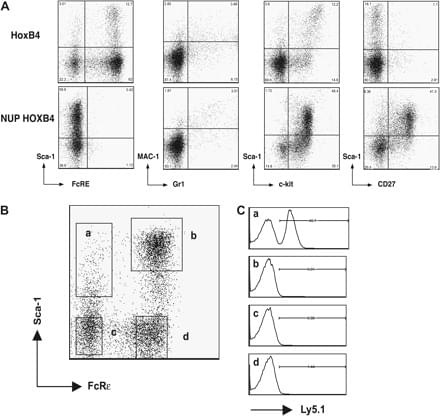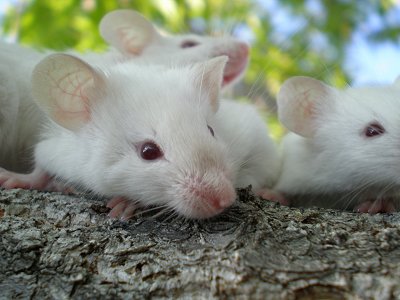It tastes like a tomato, smells like a tomato, and even looks (mostly) like a tomato. There’s just one catch: It’s purple.


Join us on Patreon!
https://www.patreon.com/MichaelLustgartenPhD
Quantify Discount Link (At-Home Blood Testing)
https://getquantify.io/mlustgarten.
TruDiagnostic Discount Link (Epigenetic Testing)
CONQUERAGING!
https://bit.ly/3Rken0n.
Bristle Discount Link (Oral microbiome quantification):
ConquerAging15
https://www.bmq30trk.com/4FL3LK/GTSC3/
Cronometer Discount Link (Daily diet tracking):
https://shareasale.com/r.cfm?b=1390137&u=3266601&m=61121&urllink=&afftrack=
Support the channel with Buy Me A Coffee!
These 15 robots may demonstrate that the concept is viable.
Personal robots have been a common trope in sci-fi for many decades. Their apparent plausibility has made many sci-fi enthusiasts wonder when they may become a reality.
Some robots with personal robot-like features have been developed, but are they personal robots?
Would you like a robot to assist you in the house? Perhaps another for personal security? Well, you can’t help but notice that there appears to be a complete lack of them.
NanoStockk/iStock.
The National Institutes of Health will invest $130 million over four years, pending the availability of funds, to accelerate the widespread use of artificial intelligence (AI) by the biomedical and behavioral research communities. The NIH Common Fund’s Bridge to Artificial Intelligence (Bridge2AI) program is assembling team members from diverse disciplines and backgrounds to generate tools, resources, and richly detailed data that are responsive to AI approaches. At the same time, the program will ensure its tools and data do not perpetuate inequities or ethical problems that may occur during data collection and analysis. Through extensive collaboration across projects, Bridge2AI researchers will create guidance and standards for the development of ethically sourced, state-of-the-art, AI-ready data sets that have the potential to help solve some of the most pressing challenges in human health — such as uncovering how genetic, behavioral, and environmental factors influence a person’s physical condition throughout their life.
“Generating high-quality ethically sourced data sets is crucial for enabling the use of next-generation AI technologies that transform how we do research,” said Lawrence A. Tabak, D.D.S., Ph.D., Performing the Duties of the Director of NIH. “The solutions to long-standing challenges in human health are at our fingertips, and now is the time to connect researchers and AI technologies to tackle our most difficult research questions and ultimately help improve human health.”
AI is both a field of science and a set of technologies that enable computers to mimic how humans sense, learn, reason, and take action. Although AI is already used in biomedical research and healthcare, its widespread adoption has been limited in part due to challenges of applying AI technologies to diverse data types. This is because routinely collected biomedical and behavioral data sets are often insufficient, meaning they lack important contextual information about the data type, collection conditions, or other parameters. Without this information, AI technologies cannot accurately analyze and interpret data. AI technologies may also inadvertently incorporate bias or inequities unless careful attention is paid to the social and ethical contexts in which the data is collected.

Intellia Therapeutics said Friday the first six patients to receive its CRISPR-based treatment for a genetic swelling disorder have safely had small, corrective changes made to dysfunctional DNA inside their liver cells.
Preliminary results from the study — just the second to show that CRISPR-based gene editing can be delivered systemically and performed in vivo, or inside the body — found that the treatment, NTLA-2002, reduced levels of the disease-causing protein, kallikrein, by 65% and 92% in the low-and high-dose cohort, respectively. In the low-dose group, the one-time infusion also reduced by 91% the painful swelling “attacks” commonly experienced by patients with a rare condition called hereditary angioedema, or HAE. Participants in the high-dose group have not yet completed the 16-week observation period.

Circa 2008 face_with_colon_three
Adult bone marrow (BM) houses a tiny pool of hematopoietic stem cells (HSCs) that have the ability to maintain not only themselves but also all the rest of highly turning over blood lineages throughout the mammalian life (1, 2). Hence, the ability to sustain HSC in tissue culture would allow serial introduction of gain or loss of function mutations efficiently in hematopoietic system. However, our failure to expand HSC in culture has hampered the use of this approach. In fact, BM suspension cultures lose rapidly their HSC content despite vigorous growth of progenitors and more differentiated cells at least for 3 weeks even in optimal cytokine milieu (3, 4). Therefore, the phenomenon of stem cell exhaustion or senescence may set the limits that make it impossible even in principle to expand HSC in culture for longer periods (5–7).
Mouse HSC do expand in vivo (8, 9), at least up to 8000-fold, as shown by Iscove and Nawa (9) through serial transplantation experiments that assessed carefully the input and output contents of HSC in each transfer generation. Recently also in vitro approaches have been improved and refined culture conditions with new growth factors can now support up to 30-fold expansion of mouse HSC ex vivo (10). However, since it is not clear to what extent external culture conditions can be improved, alternative but not mutually exclusive efforts to change the intrinsic properties of HSC have been taken. Seminal experiments in this respect by Humphries, Savageau and their colleagues have shown that ectopic expression of HOXB4 transcription factor in BM cells support the survival and expansion of HSC in vivo and importantly also in vitro (11–13). By rigorously monitoring the HSC content in their cultures of HOXB4-transduced BM cells, they found that HSC could be expanded up to 41-fold in the 2-week liquid cultures (13). HOXB4 belongs to a large family of HOX transcription factors that are crucial for the basic developmental processes in addition to their role in maintenance of different stem cell compartments.
Capitalizing on the findings of Humphries, Savageau and their colleagues, we have established long-term murine BM cultures of HOXB4-transduced cells (HOX cells) and monitored their stem cell content to find out how extensively genetically modified HSC and their multipotent primitive progenitors (MPPs) can be expanded in culture for experimental purposes. In addition and for comparison, we established BM cultures transduced with constructs encoding for Nucleoporin 98 (NUP)–HOXB4 (NUP cells) fusion protein again following the lead of Humphries et al. (14) who showed that ectopic expression of similar fusions promoted in vivo even more robust expansion and survival of HSC.
Chardan hosted its 4th Annual Chardan Genetic Medicines Conference in October 2020, featuring over 80 public and private companies representing in vivo gene therapy, ex vivo gene therapy, gene editing, RNA medicines, and other subsegments of the genetic medicines space. Among our various panels with preeminent thought leaders, we spoke with newly-minted Nobel laureate, President of the Innovative Genomics Institute, and Professor of Molecular and Cell Biology and Chemistry at UC Berkeley, Jennifer Doudna.
PhD about open questions and areas of innovation in the CRISPR gene editing space.
Circa 2014 face_with_colon_three

Both science fiction and actual science have demonstrated the malleability of memory, from implanting artificial memories to suppressing bad ones. MIT researchers recently added to the body of memory work with their recent publication in Nature about swapping positive and negative memories in lab mice.
Memories are complicated. For one thing, as soon as we experience something, our brains go to work, associating the memory with context, whether it’s emotional or geographical or involving the people surrounding the event. Because memories aren’t exact recordings of what has actually happened (which is what makes eyewitnesses notoriously unreliable), psychologists and scientists have long been toying with it, seeing how they can manipulate people to either create new associations surrounding an event, remember things that had been long buried, or even implant new memories. MIT’s recent study sought to identify the neurological basis for such ideas.
The subjects in the study were mice that had been genetically engineered to express a protein sensitive to light—a handy move, given that the scientists can use a laser to activate different neurons. They created positive memories in half of the mice by allowing them to hang out with a female mouse, and they created negative experience in the other half of the mice by subjective them to mild electric shocks. Thus, the experiences activated the neurons in the hippocampus that give structure to memories, as well as the neurons in the amygdala that associate memories with emotions.

With billions of dollars flooding into longevity, what role will epigenetic clocks play in measuring and intervening in aging?
When Horvath first described epigenetic clocks, scientists began to speculate that altering them could reverse aging. After all, if certain patterns of DNA methylation at certain sites in cells in certain tissues of your body are hallmarks of aging, could shifting them somehow reverse aging?
